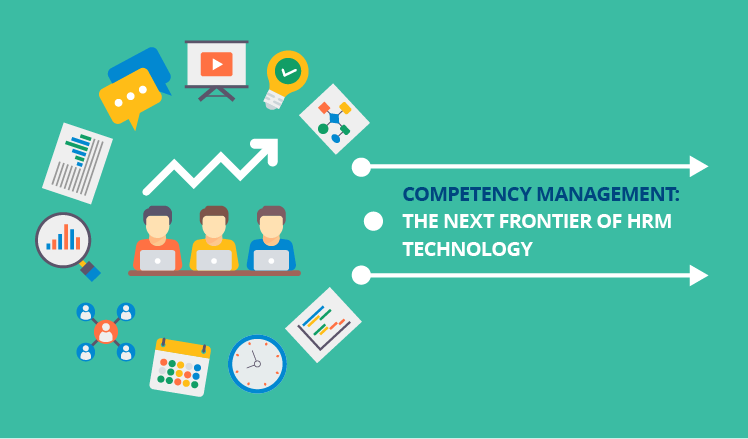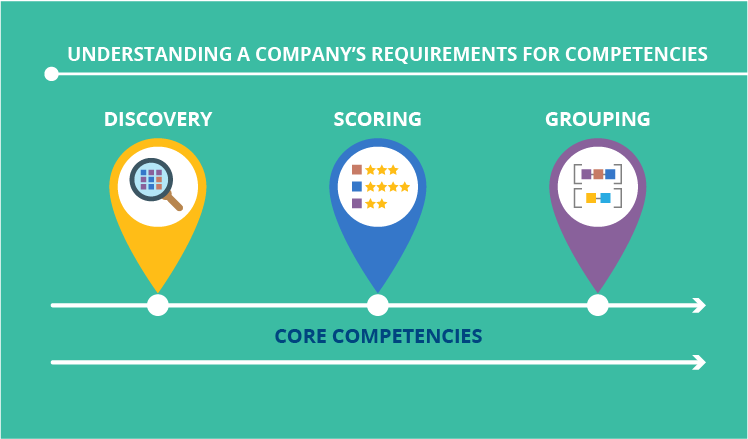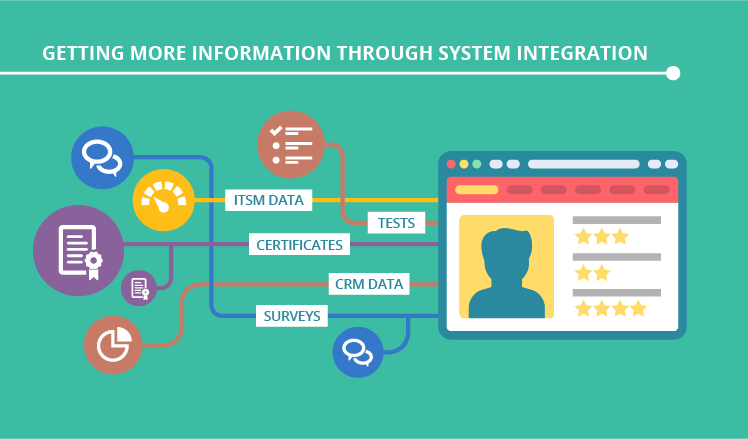Competency management: The next frontier of HRM technology

As Human Resource Systems Group reports, today practically every enterprise with 300+ employees applies competency-based human resource management of a kind. Such companies aim at a higher performance, a stronger organizational culture, and a more competitive workforce driving their business success. As goes on in the report, competency management does improve key business indicators, with 63% reduction in turnover, 19% growth in employee performance and 12.5% increase in revenues. That said, the question is how to enable efficient competency management that will contribute to:
- Visibility into the staff’s current and missing competencies over time
- Transparency of the policies on compensation and performance assessment
- Efficient collaboration between HR and line managers on staff management
With thousands of employees onboard, this task is hardly achievable if rely solely on HR managers’ intelligence and paper workflows. In this regard, a competency management system (CMS) can become a valuable tool to make competency management structured, organized and manageable, as well as to automate necessary but time-consuming tasks while recruiting and nurturing the company’s staff. Drawing on both HRM and custom software development services, let’s look at how a CMS can address HR challenges related to optimizing competency management.
Understanding a company’s needs for competencies

Discovering core competencies
Job analysis should be the starting point of the competency management process, as it helps to bring homogeneity of competencies understanding among all employees. As a result, transparent communication of competencies to the staff and a fair compensation based on objective assessment become the factors minimizing misunderstandings and disputes on biased remuneration, promotion or other changes in staffing.
That said, a company should involve line and functional managers in listing and describing role-specific competencies, as well as outlining competency assessment criteria and roadmaps for improving mastery. At this stage, a CMS helps to store all competency-related data in a dedicated library and share it with staff members. To ensure no core competency is lost out of sight, the company can also take into account the opinions of their leading employees. For this, they can be surveyed about the skills most needed for work, as well as time devoted to activities requiring such skills. After that, this information can be stored within the software and used in case any disputes on the objectiveness of the competency set arise. As an alternative to providing competency descriptions from scratch, a company can incorporate third-party competency dictionaries or libraries, such as those by Harvard University, HRSG, Performance Partnership, or other.
Scoring core competencies
Some competencies, like stress tolerance or flexibility, can be either possessed or not. By contrast, others like mastery of a particular software product or language, may require a wider scale (e.g. John’s presentation skills rate 4 out of 5, while Mary’s - 2 out of 5). Therefore, within a CMS, competencies should be evaluated according to some scale. This way, employee ranking by competency levels becomes more accurate and clear.
Grouping core competencies
As some competencies can come as interdependent, it makes sense to organize them in clusters for the purposes of assessment and progress tracking. A CMS can make these interconnections visible so as to give HR managers more information while picking employees for training or promotion. For example, the system can calculate a total score for the Managing People cluster by acknowledging the achieved levels of relevant competencies, such as a positive attitude, social influence, and the ability to manage group processes. As the result of applying such a holistic approach to competency management, development of employees’ various competencies becomes more balanced against each other.
Target-based cultivating of competencies
One the one hand, competency management is the core of continuous employee development. With employees, teams and departments clearly seeing their competency roadmaps, HR and functional managers can collaborate on individual competency targets and development plans for staff members, all these being managed through a single CMS module.
On the other hand, competency development is also called for once the enterprise’s strategic decisions cause a need for hiring specialists in particular fields. For instance, if a property insurance company decides to engage in health insurance services as well, they will need employees with relevant experience. In such situations, HR managers can use a CMS to identify the insufficient number or, in the worst case, absence of specialists with required competencies. Once the competency gap is detected, there are two options: competency-based recruiting or training of the current staff up to the required level.
As for recruiting, a detailed competency library will become a handy tool for HR managers to quickly formulate accurate job descriptions and hold competency-based interviews. This way, HR managers will be able to find most suitable candidates for vacant positions. Down to bringing up in-house employees, a CMS can be set to analyze employees’ competency profiles and pinpoint candidates lacking a minimum of the required competencies so as to recommend them for training.
Analyzing the achievement of competency targets
Once competency targets are set, the challenge is to track their fulfillment over time so as to know at what stage the enhancement of the staff’s level is, or how many employees still lack the required competencies. To lessen manual updates of employee competency profiles, a CMS can be integrated with the company’s learning management system. This way, it will automatically retrieve information on training completed by employees and introduce relevant changes to their profiles.
As with every competency profile update, manual or automated, the company gets closer to their competency targets achievement, it’s important to allow progress tracking by HR managers at any given time. Therefore, a CMS can be tuned to automatically analyze and create reports on changes in employees’ competencies. Notifications about current targets states will keep the HR teams always up to date with the progress of competencies targets.
Getting more information through system integration
As information on competencies is crucial for objective appraisal and promotion, HR managers try to source details from a range of internal resources. A CMS can help to accumulate competency-related information in dedicated employee profiles giving a clear view of their competency levels.

While some competencies can be assessed by line managers or verified through submitting relevant certificates and employees’ tests results, an objective assessment of other competencies may require a collective opinion. As an example, consider a manager’s competency to set clear goals. There’s a well-known practice for its evaluation by asking subordinates how well they understand the goals set by the manager. For such cases, a CMS integrated with survey services can automatically initiate template-based surveys. This way, the software will gather data from relevant groups of employees’ contacts (e.g. subordinates, managers, customers, etc.) and process it to deliver a total score.
To further enrich information on employee competencies, the CMS can be integrated with other enterprise systems so as to automatically retrieve specific information on employee performance. For instance, the data on IT support staff’s performance can be collected from the IT service management system, while a CRM can become a great source of insights about the sales team’s efficiency in interaction with customers. With such information at hand, line managers will be able to assess employees more objectively.
Applying competency management to building project teams
In companies engaged in project-based business, quick formation of teams with all the needed competencies becomes particularly important for staying competitive. The instant search for employees by competencies in the staff competency database can help managers to shorten the time for ramping up project teams. To narrow the list of suggested candidates, it’s worth considering search by multiple criteria and employee ranging with regard to their current workload (if such data can be retrieved from the task assignment system). This way, the employees that possess a required combination of competencies, like a set of presentation skills and experience in particular industry or geographical region, will come first in the suggested list.
Conclusion
Well-organized competency management processes supported with technological tools make for a logical and systematic employee development aligned with a corporate strategy and tactical needs. A competency management system can enhance competency management as it gives a clear view of the competencies the company has or is looking to have, helps to identify gaps in employees’ competencies, and allows to track achieving goals on competency-bound professional development.

